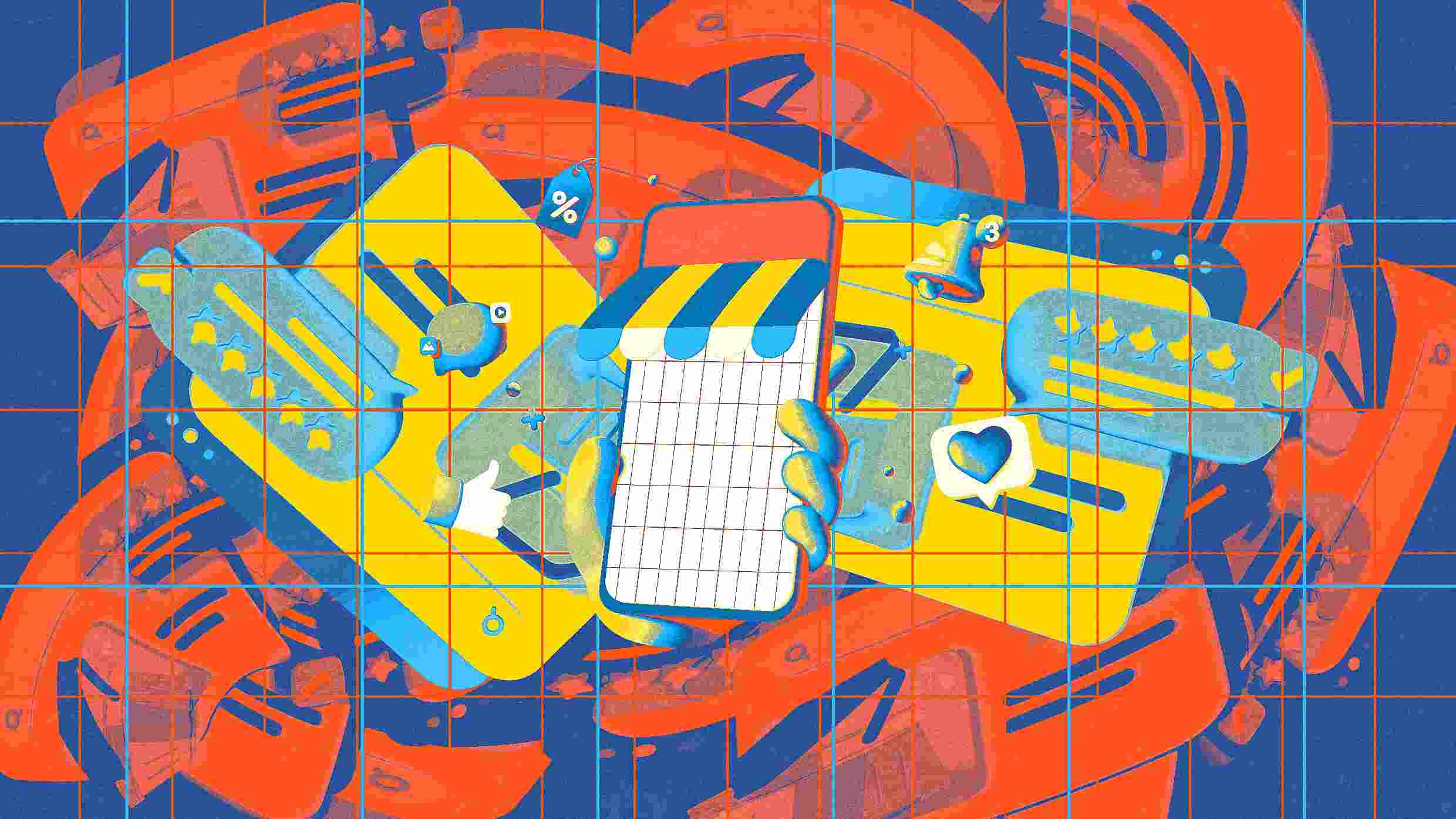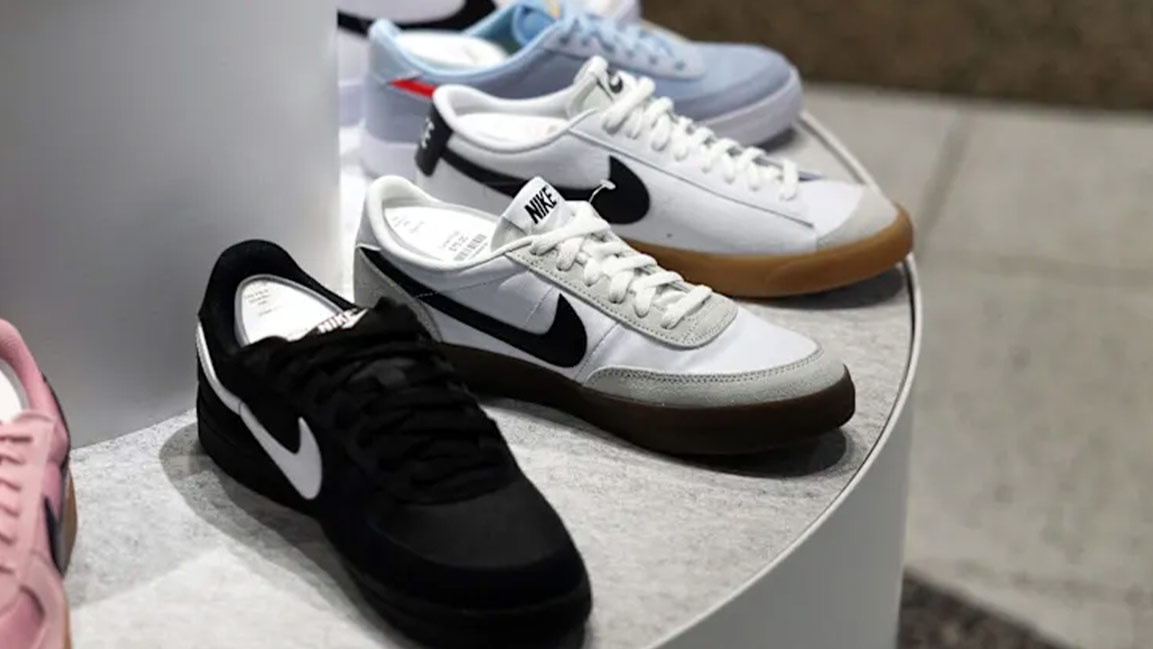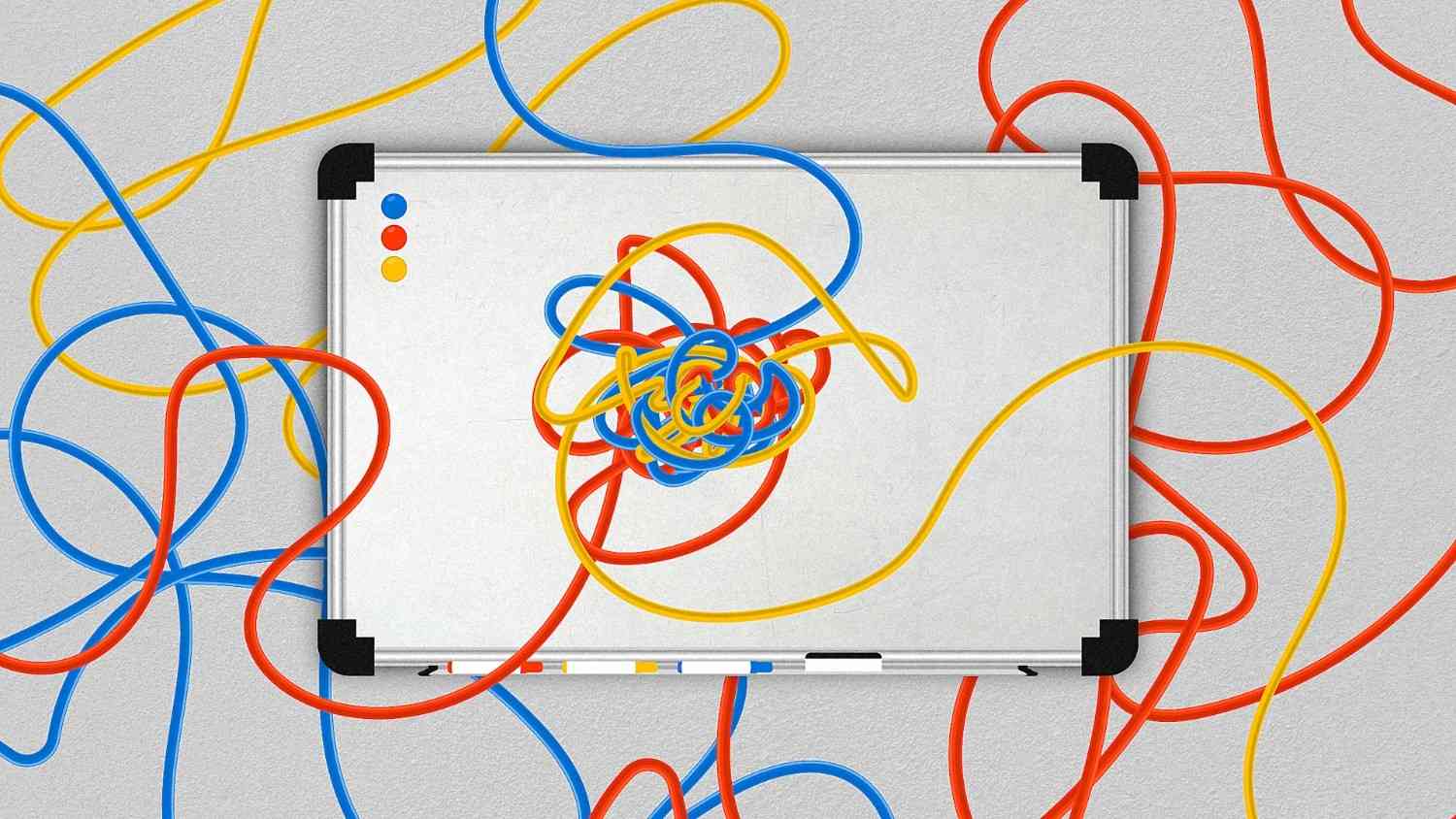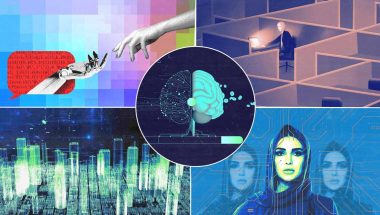- | 4:51 pm
Online shopping is terrible. AI is here to fix it
Buying stuff online feels like work. Can new technology make it fun again?

On a recent Saturday, I set out to find my two daughters flower girl dresses for an upcoming wedding. I typed “flower girl dress” into Google, a rabbit hole opened, and I tumbled in, only to emerge three hours later with a dozen tabs and thousands of options to choose from.
If this sounds familiar, welcome to online shopping in 2023. It is dull, draining work. Whether you’re buying groceries or sneakers, it entails sorting through endless pages of inventory.
Three decades into e-commerce, consumers have resigned themselves to the idea that shopping means taking on the cognitive load of processing hundreds of data points. And while retailers have made marginal improvements—like better targeted ads and product suggestions—they haven’t successfully replicated the kind of curation and discovery you might experience at a delightful brick-and-mortar store. “It’s the tyranny of the grid,” says Maria Renz, Google’s VP of commerce, who previously spent more than 15 years at Amazon.
But Renz—and other e-commerce experts—believe that change is around the corner. Behind the scenes, many companies are already experimenting with artificial intelligence and machine learning to improve the shopping experience. The dawn of generative AI is only going to accelerate the transformation. And over the last few years, brands like Stitch Fix and Hungryroot have taken radical new approaches to e-commerce, offering a glimpse into how the shopping experience could be better in the near future. The question, however, is whether consumers and retailers are ready for such a big transformation.
HOW ONLINE SHOPPING CHANGED OUR LIVES
When e-commerce stores first appeared in the mid-1990s, it felt like a revolution. The very first retailers—Amazon, eBay, Zappos—offered a basic user experience, featuring a simple search engine and hyperlinks to products. But they opened up a vast world of products people never had access to before. Overnight, an avid reader in Iowa could access collections of rare books, and a fashionista in Nebraska could order the latest Manolo Blahniks.
Amazon began with a million book titles and grew exponentially from there. Legacy retailers like Safeway and Nordstrom were uploading their inventory. Over time, brands would find ways to sell almost everything online, and ship them to our doorsteps in days. By the 2010s, a new generation of hip startups like Warby Parker, Everlane, and Away launched, selling their products entirely through their own websites, which allowed them to build more intimate relationships with customers.
Online retailers have made incremental improvements to the shopping process. Startups hired designers to create sleeker, more streamlined websites that were easier to navigate. Retailers began offering subscription programs to make it easier to reorder products. Brands got better at marketing products based on what customers similar to you have purchased.
But there are other reasons that brands and retailers haven’t been more motivated to innovate, says Olivier Toubia, a marketing professor at Columbia Business School. The companies that build e-commerce platforms are not always motivated to streamline the shopping experience for consumers. For instance, drastically paring down the number of search results that show up could offer a more curated experience, but it could also diminish sales. The same goes for suggesting similar products at a lower price point. “Retailers have been motivated to improve the shopping experience, as long as it also improved the bottom line,” he says. “Can you blame a business for trying to make money?”
EXCITING EXPERIMENTS
Still, over the years, e-commerce entrepreneurs have tried to experiment with new ways of interacting with consumers. Some of the most interesting approaches use AI to create a highly customized shopping experience for each customer.
Take, for example, Stitch Fix, which in 2021 launched a new platform called Freestyle that creates customized online boutiques for each consumer. Shoppers would fill out a brief survey about their style, size, and budget preferences, then receive a feed of outfits tailored to them. On the backend, Stitch Fix used data about its 4.1 million customers to train AI to match each new shopper to customers with similar aesthetics. This allowed the website to suggest pieces that would likely be a good fit.
The result was a radically different shopping experience, more akin to a social media feed. You would see a series of fully styled outfits and when you clicked on something that caught your eye, the AI would get smarter. While you can shop in a more focused way by specifying the category you are most interested in buying, such as outerwear or jeans, the entire experience was much more about curation and discovery. In other words, the burden is not on you to search for what you want; you can passively scan through options you’re likely to appreciate.
Jeff Cooper, Stitch Fix’s head of data science, says it took years of data from billions of transactions with customers to be able to create a personalized experience that really works. But the platform also incorporated softer data, about stylists’ suggestions about what pieces went well together, to ensure suggestions were also guided by human intuition. “We obviously fed the algorithm client data, the way many other retailers do,” he says. “But I think the secret sauce is having expertise from stylists, trend experts, and merchandizing experts. I think this find-tuned artificial intelligence approach is the next big wave of e-commerce.”
In the world of food, a grocery startup called Hungryroot has taken a similar approach of using AI to help the customer shop. Customers fill out a profile, specifying their dietary restrictions, favorite recipes, and flavors, along with the number of meals they would like to prepare for that week. Then, their grocery cart will automatically fill with the ingredients necessary to cook several chef-crafted recipes. “Grocery sites start with an empty cart, which is daunting and time-consuming to fill,” says Ben McKean, Hungryroot’s founder and CEO.
Customers can proceed to tweak what is in their cart. They might remove a yogurt flavor they don’t like or switch out one recipe for another, all of which helps the AI make better decisions for you next time. However, 70% of groceries purchased are chosen by algorithms, not customers. And while the average shopper spends hours a week grocery shopping, he says that the Hungryroot customer only spends a few minutes. “There’s an enormous cognitive load required to figure out all the groceries you will need for your family for that week,” he says. “But AI is very good at optimizing these decisions.”
So far, Hungryroot’s team has used machine learning technology to help finesse its algorithm. Over the past four years, it has generated seven million orders totaling 100 million grocery items. But as Generative AI technology has improved—including platforms like OpenAI’s ChatGPT and Google’s Bard—McKean is thinking about how to incorporate it into the shopping experience. He argues that generative AI wouldn’t be very good at optimizing a customers’ grocery shopping experience, at least at this point. But it might have other uses. “If we try to use generative AI to fill a grocery basket, it ends up making up recipes and foods,” he says. “But it is very good at explaining to people in natural language why the algorithm chose what it did. So we might plug it in as a kind of shopping companion.”
THE AI REVOLUTION TO COME
Hungryroot isn’t alone in imagining that AI could become a highly skilled e-commerce shopping partner in the near future. The Salesforce study found that 92% of the 1,125 retailer leaders it surveyed are investing in generative AI. Renz from Google imagines a future where generative AI can help guide us through tricky buying decisions.
Renz says that Google currently has the largest AI-powered dataset for shopping in the world, with 35 billion listings that include products that are both online and offline, in brick and mortar stores. (This is how you can search for a specific mascara on Google and discover that it is in stock at a store near you.) While Google hasn’t yet deployed generative AI into its shopping experience, Renz says it could eventually become a knowledgeable shopping companion. This is particularly true for big ticket or complicated purchases, like a luxury bag or an electric bicycle.
“Generative AI can be very impactful when you don’t know much about a category or the factors you should consider before purchasing,” she says. ”Ordinarily, you would be researching for weeks, with multiple tabs open on your browser, and you’re learning about the mechanics of bikes. But AI can distill a lot of information and compare two products side-by-side.”
Frommer, from the New Consumer, believes that this kind of AI shopping companion could become even more powerful if it was personalized to you. “Imagine if Google developed an overarching shopping personality for you,” he says. “If it knew your size and budget, the kind of clothes you like to wear, your favorite meals. Instead of searching for a particular budget, you could tell the chatbot, ‘Find me a new trench coat for the fall’ or ‘Order me ingredients for my lasagna recipe.’”
But Renz argues that AI isn’t going to be a magic bullet that will transform online shopping. Instead, companies will incorporate a range of technologies to make the whole experience more fun and efficient. For instance, Google has recently launched a new virtual try-on technology that allows consumers to see garments on models whose bodies are very similar to their own own. Lens, Google’s image recognition technology, allows you to take photos of people in the real world or screenshots on Instagram, and immediately figure out where to buy products in the pictures.
She says that companies are only just beginning to incorporate these technologies into shopping, but change is coming fast. “There’s an opportunity to take e-commerce to the next level, and really delight users,” she says. “We believe that the future of shopping will be faster and easier, but it will also be more comprehensive. It will be more like the way we shop in real life.”
Almost exactly 12 years ago, I flew to Berlin to attend IFA, Europe’s big gadget trade show. Naturally, I took my MacBook Air. But I also brought my iPad 2, which I’d recently equipped with a laptop-style keyboard case called the ZaggFolio. Once I was at the show, I made an unexpected discovery: The iPad was all I needed to cover the show. I ended up leaving the MacBook in my hotel room’s safe.
Back home, the iPad/ZaggFolio’s many virtues—small size, long battery life, built-in cellular wireless, streamlined apps—continued to grow on me. Later that year, I wrote a piece explaining how the iPad 2 became my favorite computer. It caught some people by surprise. After all, many pundits were still helpfully explaining why Apple’s tablet was fine for content consumption but insufficient for, you know, creating stuff.
Now I’m writing this newsletter on the plane to Berlin, where I’m heading to attend IFA for the first time since 2011. The only computer I’m toting is my 11″ iPad Pro, along with Apple’s Magic Keyboard. That’s because the epiphany I had a dozen years ago stuck, and I’ve been iPad-first ever since.
In the intervening years, I’ve done something like 95% of my writing for publication on an iPad. I’ve also used the tablet for copious amounts of drawing, programming, web development, video editing, reading, and more. In other words, the iPad remains my favorite computer, and I have no plans to cease spending most of my computing hours with it. (Full disclosure: I recently bought a 15″ MacBook Air and prefer it for certain tasks, such as using Photoshop and performing heavy-duty file wrangling. But it plays a secondary role in my life and has never left my home.)
For all the iPad’s lovable qualities, there’s something bittersweet about the platform, at least if you hope the iPad Pro will get ever more professional. My friend Jason Snell, who certainly has a deep appreciation for the platform’s virtues, recently wrote that he’d given up on traveling with an iPad as his sole computer, in part because it’s still limiting for a podcaster such as himself. Jason should use whatever device serves him best, but his decision is a reminder that the iPad bears the burden of great potential, and has yet to live up to all of it.
All along, we’ve known that Apple wants the iPad to be capable but distinctly different from the Mac. Yet, as the iPad gets more powerful and the Mac gets more modern, it isn’t clear that even Apple has a coherent view of where that leaves the iPad. The company’s legendary dedication to making what Steve Jobs called “the whole widget” usually results in deeply integrated experiences; the iPad, however, has gotten that benefit only in fits and starts. And lately, it’s felt like the platform is stuck somewhere between its past and its future.
In 2021, for example, Apple gave the iPad Pro an M1 processor—the same potent chip as in a MacBook—and, in the tablet’s highest-end version, a cavernous 16 GB of RAM. Many people, including me, took it as a sign that the iPad’s software was about to take some great leap forward to make the most of all that new computational muscle. It didn’t. Even two years later, when Apple released the first iPad versions of two of its industrial-strength Mac apps—Final Cut Pro and Logic Pro—they weren’t all that advanced.
Then there’s Stage Manager, a feature introduced in last year’s iPadOS 16, which brings floating windows to the iPad interface for the first time. Instead of building on the existing iPad multitasking features, it’s a wholly new interface but disabled by default, as if Apple doesn’t have much confidence in its own creation. Though it remains a work in progress, I still find that it muddles the iPad experience far more than it improves it, with the possible exception of when I use it on an external monitor. It’s the old multitasking—which, thank heavens, I can still use—that feels iPad-native.
Another troubling development: The difference between a MacBook and an iPad is less dramatic than it once was, but most of the recent change has been in the Mac’s favor. That began in 2020 with the introduction of the first Mac models that ditched Intel chips for ones Apple designed itself. The first Apple-silicon Macs were blazing fast, turned on instantly (just like an iPad!), had remarkable battery life (better than an iPad), and were able to run a sizable collection of iPad apps. Newer models, such as my 15″ MacBook Air, have built on that strong start.
The fact that the Mac has done so much evolving and improving in one clear direction, all within just a few years, makes the iPad’s lack of a smooth trajectory to a better place all the more obvious. Bloomberg’s Mark Gurman is reporting that even faster iPad Pro models with an improved Magic Keyboard will arrive next year; I’m already worried that they’ll tilt even further in the direction of hardware that is far more advanced than the software it runs.
I don’t mean to be overly gloomy. I’ve often written about how the iPad has improved my productivity; everything I’ve ever said remains true, which is why I’m not rehashing it here. And good things do come to iPad users who wait. For example, I’m giddy over the news that iPadOS 17, due out shortly, will finally support external webcams, such as my trusty Logitech.
Still, the fact that something as mundane as webcam support is coming five years after the first iPads with USB-C underlines how lackadaisical the platform’s progress can be. There’s a long list of other things I’d like my iPad Pro to do—and I hope I don’t have to wait forever to get them.








































